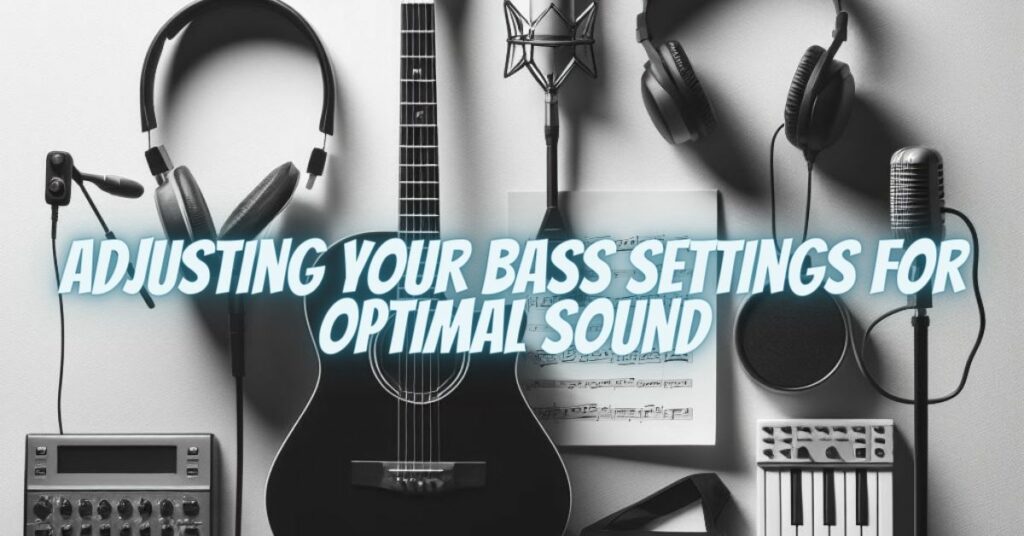Adjusting your bass settings is a crucial step in optimizing your audio experience, whether you’re listening to music, watching movies, or gaming. The balance of bass can significantly impact the overall sound quality, so it’s essential to understand how to make these adjustments effectively. In this guide, we will explore the various methods and tools available for adjusting your bass settings to achieve the ideal listening experience.
Understanding Bass Settings
Bass settings refer to the control and manipulation of low-frequency sound, which is responsible for the deep and powerful tones in your audio. Adjusting bass settings allows you to tailor the bass response to your liking and ensure it complements the rest of the audio spectrum.
Methods for Adjusting Bass Settings:
- Equalization (EQ):
- Graphic Equalizer: Many audio systems and software applications include a graphic equalizer that allows you to adjust individual frequency bands, including the bass frequencies. You can boost or cut specific bass frequencies to your preference.
- Parametric Equalizer: A parametric equalizer provides more precise control over the frequency, bandwidth (Q), and gain. This can be especially useful for fine-tuning the bass response.
- Bass and Treble Controls:
- Basic audio systems often feature separate bass and treble controls. Adjusting the bass control allows you to boost or cut bass frequencies, while the treble control affects high frequencies. Be cautious not to overdo it, as excessive bass adjustment can result in distortion.
- Subwoofer Controls:
- If you have a subwoofer as part of your audio system, it typically comes with its own set of controls, including volume, phase, and crossover frequency. These controls allow you to fine-tune the subwoofer’s bass output for the best integration with your main speakers.
- Room Acoustics:
- The acoustics of your room can significantly influence how you perceive bass. Experiment with room layout, speaker placement, and acoustic treatments to optimize bass response.
- Sound Modes and Presets:
- Many audio systems offer predefined sound modes or presets that adjust bass settings and other audio parameters for different types of content. These can be a convenient way to quickly adjust bass for music, movies, or gaming.
- Subwoofer Positioning:
- The placement of your subwoofer in the room can affect bass response. Experiment with subwoofer positioning, such as corner placement or against a wall, to find the best spot for optimal bass performance.
- Auto-EQ and Room Calibration:
- Some advanced audio systems come with room calibration systems that automatically adjust bass and other settings based on your room’s acoustics. These systems use a microphone to measure the room’s sound characteristics and adjust the audio accordingly.
Best Practices for Adjusting Bass Settings:
- Listen Cautiously: When making bass adjustments, listen carefully to the changes you’re making. Trust your ears to guide you in finding the right balance for your audio system and content.
- Avoid Overdoing It: Excessive bass adjustment can lead to distortion and an unbalanced sound. Be mindful not to boost the bass to the point where it overwhelms the rest of the audio.
- Consistency: Maintain consistency in your bass settings across different listening scenarios, such as music, movies, and gaming. Adjust settings to match the content you’re enjoying.
- Room Acoustics: Remember that room acoustics play a significant role in bass perception. Experiment with room treatments and speaker placement for the best results.
Adjusting your bass settings is an essential aspect of optimizing your audio experience. Whether you’re using an equalizer, subwoofer controls, or room acoustics, the goal is to find the right balance that complements your audio system, content, and personal preferences. Listen attentively, experiment with different settings, and be cautious not to overdo it to achieve the perfect bass response for your unique listening environment.

